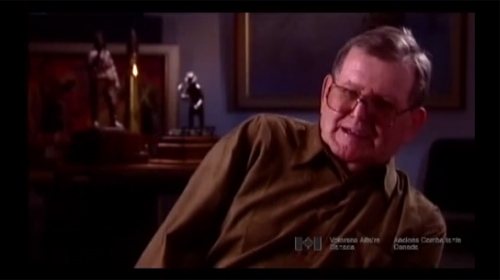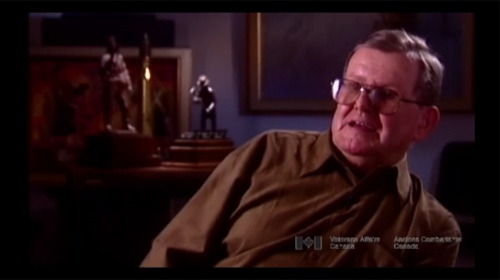Victim of Friendly Fire
Heroes Remember
Victim of Friendly Fire
Transcript
Description
Mr. Bevan describes how his division, along with other troops, were the victims of friendly fire from bombers during the attack on Falaise.
James Bevan
Mr. Bevan was born in 1924, in Vancouver, British Columbia. He was an only child, and at the age of 6, moved to Red Deer, Alberta, with his family. Mr. Bevan first joined the service with the Calgary Highlanders, but was booted the next day when it was discovered he was underage. Wanting to join the Navy, but unable to convince his parents to allow him to join, he signed up at the local barracks with the 78th Artillery Battery - part of the 13th Field Regiment When War was declared, Mr. Bevan was sent to Calgary and Shiloh for training before eventually shipping overseas. After arriving in Great Britain, the regiment trained until shipping out as a part of the D-Day invasion. After action in Falaise, the 13th Field Regiment worked its way across France and into Belgium, and eventually into Germany - soon after which, the war ended. The regiment remained in Germany for a short period, before returning to Holland to help escort German POWs. Soon after, Mr. Bevan volunteered to join the battle in the Pacific; however, the war ended before he shipped out of England. He returned to Canada soon after, and entered training on a printing press, followed by a 40+ year career.
Meta Data
- Medium:
- Video
- Owner:
- Veterans Affairs Canada
- Duration:
- 03:23
- Person Interviewed:
- James Bevan
- War, Conflict or Mission:
- Second World War
- Location/Theatre:
- France
- Battle/Campaign:
- D-Day
- Branch:
- Army
- Units/Ship:
- 13th Field Regiment
- Rank:
- Gunner
Related Videos
- Date modified:





